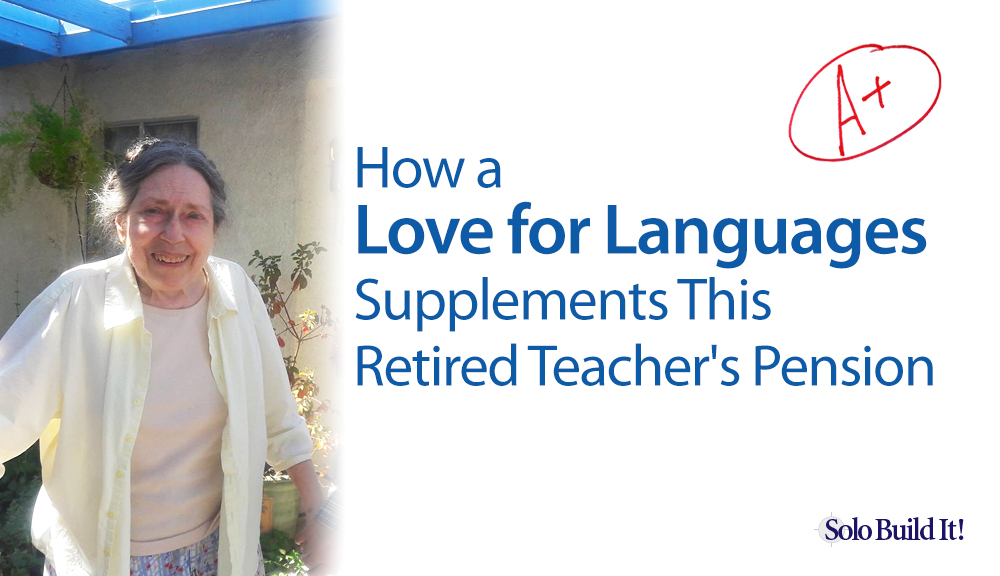
Updated for 2021
I enjoy interaction with my site visitors and newsletter readers, and with other site owners. Some comments about how a page has helped a reader have really ‘made my day’! Catherine Simonton from englishhints.com
Catherine Simonton loves studying languages and teaching English. She’s fluent in Spanish and English; she also speaks a bit of Chinese, Portuguese, German and Ukrainian.
It’s not just the language that fascinates her, but how learning (and teaching) a language opens the door into different cultures and ways of living.
For years she taught ESL (English as a Second Language) at local adult schools. She even prepared Mexican nurses for an exam required for working in the USA. She loved her work. Then one program after the other was shut down for lack of funding.
Catherine started to look for alternatives. That’s not easy when you live in a small city, are handicapped by rheumatoid arthritis, and compete with lots of much younger teachers.
She never thought she could teach ESL on her own. How would she even get started with building a web-based business? But then she came across SBI!, studied its possibilities, and saw exactly the opportunity she was looking for.
How she grabbed this opportunity and ran with it — that’s the story you’ll hear in our interview with Catherine.
1. Catherine, the inspiration for creating englishhints.com came from a course you did for Mexican nurses. Can you tell us more about that?
Actually, the inspiration came from my whole experience teaching ESL, although the class of Mexican nurses was a highlight.
I love teaching adult ESL. It’s a great chance to work with (and often get close to) motivated students, help them gain skills that will have real value in their lives, learn about their lives and cultures, and create a classroom culture of openness and mutual respect.
It’s also a job that allows a lot of creativity, trying to find ways to overcome individual obstacles and the difficult aspects of English. I would have been happy to keep working for the local adult school, but state funding dried up during the aftermath of the recession.
Meanwhile, I had also started working part-time for a nonprofit agency on the Mexican border preparing Mexican nurses to take the NCLEX—the exam required of all nurses in order to work in the United States.
They were excellent nurses, and we had a nursing shortage, so it would be a win-win situation if they could just pass the test. However, the NCLEX is a difficult exam, and much harder for non-native English speakers.
I had been introduced to English Health Train which offers some great materials designed to help health professionals from other countries communicate better in English with their patients and co-workers. So we used those materials, nursing textbooks in English, and other resources I could find or develop to help the nurses think and talk in English about nursing.
Unfortunately none of those that took the NCLEX after the class were able to pass at that time. However, the center wanted to let us try again, with a longer time period, since most of the nurses started with very limited English.
I was preparing a curriculum that I think could have helped, but funding for it fell through.
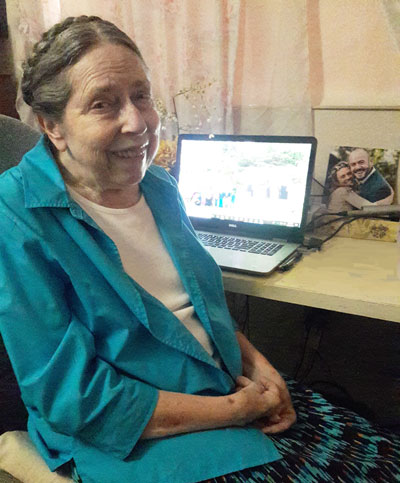
I live in a small city and am limited by rheumatoid arthritis, so I didn’t have any good job prospects here. Luckily, our finances improved enough that we could get by without my work, at least for a while. I still wanted to teach ESL, so I looked into online teaching and got a TESL certificate online.
I applied at several language schools online and got a couple of Skype interviews, but they ended abruptly after they saw me. I think they were looking for younger teachers…
At that time I had no idea how to get started on my own. Then I ran into SBI!, studied its possibilities, and saw the opportunity I was looking for. I would have liked to specialize in English for health professionals, but the numbers weren’t there. People don’t search much for English for specialized purposes, except maybe business English — not my expertise or my passion.
So, I’ve aimed specifically at helping intermediate English learners (students, professionals, or others) get the vocabulary and skills they need to reach their goals.
And Catherine wouldn’t be enjoying the rewards of owning an online business — the deep satisfaction that comes with building something of value out of nothing. More about this in her answer to question 8.
So, when a door closes in your life, watch for the opportunities that may lie behind a door you had never paid attention to before!
2. Tell us about your philosophy regarding content. How do you know what your prospective customers are looking for? Where does this information come from?
Of course, I want to provide the most useful content I can for my audience. I’ve researched a lot of keywords — the words or expressions people use as they look for help with learning English.
Sometimes it’s hard to tell if certain searches are by native English speakers rather than language learners. Their purposes, and the information they need, can be quite different. I suspect a few of my more popular pages are used by both groups.
I’ve also used materials I developed as an adult school teacher that seemed to help my students. Over time I’ve expanded areas on relevant topics or those that get more response on EnglishHints, even if many keyword demand numbers were low.
For several pages that has proved very successful. On the other hand, some of the academic vocabulary I felt was important has gotten much less response.
In general, providing content with only moderate demand and low supply, i.e., topics few other sites were discussing, according to the keyword numbers, has been the best traffic strategy for me. That’s what the SBI! Action Guide teaches.
However, when I first read the Action Guide, I thought many of the demand numbers for my keywords were lower than recommended. I built pages on those topics anyway, because the subjects were important information for my audience.
I have also avoided certain areas that are well-covered elsewhere, or that I don’t feel well-prepared to teach, especially video and pronunciation lessons.
What’s ironic is that my single most visited page is one of only four pages that address pronunciation at all. It’s on English vowels and the connection between their spelling and pronunciation. I wrote it to help with reading: recognizing and knowing how to pronounce written words.
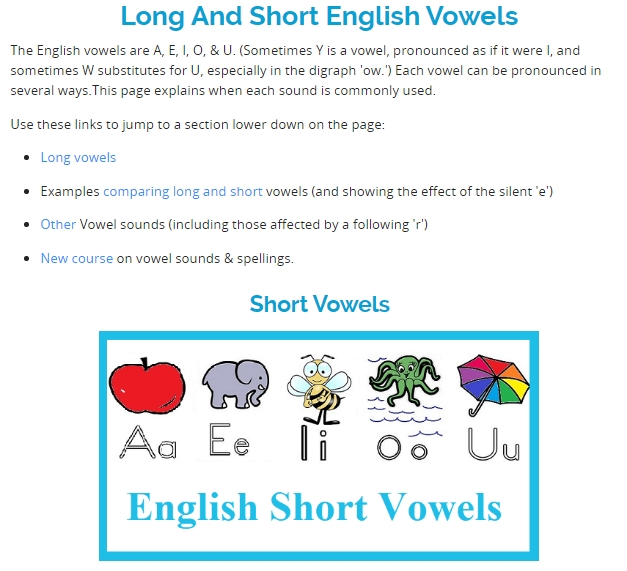
An excerpt from Catherine’s popular page about English vowels.
Let’s look at each point.
Keywords: Keywords are the words that people use to search at Google, Bing, etc. One of your first tasks when starting an online business is to research keywords for your niche. As an SBI! member, you’ll do this with Brainstorm It!.
This smart tool brings back hundreds of keywords related to your niche concept. For each keyword, it tells you how many people search for it (demand) and how much competition there is (supply). Not only is this important for planning your content (i.e., which topics to write about), it also helps you find out if your niche concept is too broad, too narrow or just right.
The numbers though aren’t the only factor to consider. Like Catherine pointed out, she built pages around keywords with not-so-great numbers because she knew that the topics were important for her audience.
Search Intent: “Search intent” is what people are actually looking for when they perform an online search — as opposed to what you think they’re looking for. If your interpretation of what a keyword “means” is different than the search engine’s interpretation, your web page is unlikely to achieve a high ranking.
Let’s say your website is about party planning. You intend to write a page about how to use balloons for sprucing up a birthday party. You choose the keyword “birthday balloons.” However, people who type “birthday balloons” into Google are usually looking to buy these types of balloons. They don’t look for ideas about how to throw a party.
Personal Experience: Your personal experience and knowledge of your niche are another crucial ingredient for deciding which topics to cover. Without this, you’d just be regurgitating other people’s content. No matter how good the numbers are, you would not succeed with this approach.
Data Analysis: Once you’ve published a good number of pages, and get a steady stream of visitors, it’s time to get to know your visitors. Which pages do they visit most? Where do they stay the longest? Which links (for example to an income-generating affiliate partner) are clicked most often?
In DAY 8 of the Solo Build It! Action Guide you’ll learn how to get the most out of your metrics with the least amount of time. It’s easy to drown in data if you don’t know what to look for!
3. You have a well designed site, with lots of quality content. Did you create all of it by yourself?
Basically, yes. I wrote all the content except for one guest post and possibly some small quotes. I also designed the site using SBI!’s Sitebuilder and some help from the SBI! Forums.
However, almost none of the images are mine, though I’ve altered many of them. The images mostly come from sites like Pixabay and OpenClipArt.org, which offer public domain and copyright-free images to use for any (legal) purpose. I have also bought a number of stock photos, including my site header, and got my owl logo/favicon by working with an artist on Fiverr.
At the beginning I had trouble thinking of relevant pictures for many pages, but I kept trying, not least because they add color and make text easier to read. Beginning English requires lots of pictures, but it’s harder to illustrate more abstract ideas or vocabulary.
That’s all the more commendable as Catherine is from a generation that did not grow up with computers, cell phones and tablets.
With the right guidance and easy-to-use tools, like SBI!’s Sitebuilder and its dozens of professionally created site design templates, it’s totally doable.
Catherine brings up another good point: adding images to your pages. The human brain processes visual information 60,000 times faster than plain text. We simply respond and relate better to visual information.
So if you want your readers to react positively and deeply to your content, include more than just text. Images are one of several visual options to make your content spark. While using your own original images is best, there are creative ways to present public domain or stock photos with a personal touch.
4. You offer several courses on your site, both free and paid. What advice about creating and selling online courses can you share with our readers?
I wish I could give some great advice about courses. I’ve certainly studied course-building enough in the last two years, but I’m still just learning. I haven’t had many paying students yet.
The most important advice is to be sure there is demand for a course before creating it; not just interest, but a real need that people will pay to satisfy. I did market research before most of my courses, so I know there’s real interest in the subjects.
The problem for me is getting specific enough about what people will pay to learn and then selling it in a way that makes it irresistible. I’m a teacher at heart and not at all a salesperson.
In fact, SBI! has been a wonderful business education for me, but I started very near zero, so I really struggle with making business judgments.
I’m also working — but so far have not succeeded well — at making videos (voice-over slides) that are short enough to keep my students wanting more. It’s probably obvious reading this interview that I like to explain things and that it’s hard for me to leave out details that seem important to me — even though I know that simplicity and brevity are key teaching skills!
I’m optimistic that I can master video length and course sales at least enough to earn decent income from two or three of my courses within a year or so.
Our reply to that? Selling something does not put you in the “hard selling, gold chained, used car salesman” slot. There is loads of hard-sell and dishonesty. Some of it hides in brilliant sales copy. Be careful as a consumer, but as a marketer…
As long as you offer value for value, there’s nothing wrong with your visitors knowing that you make money.
If you follow Solo Build It!’s Content Traffic PREsell process, you’ll arrive at the monetization stage automatically. There’s no need for pushy sales strategies. Of course, you still need to tell your visitors about your products or services!
But before you spend weeks or months creating a product, make sure it’s a product that your audience really wants and is willing to pay for. Catherine mentions market research. That’s a “must do” when you’re just starting out, when you don’t yet have your own audience.
When you already have an audience you can reach out to, via your newsletter, on social media, or via a survey on your site, that’s your best way to gauge the demand for your product idea.
Fellow SBI! member Elizabeth O’Brien started her most popular online course after polling her readers and having people pay for it, before the whole course was ready. She then had this test group go through her course as she created each new lesson. Their instant feedback helped her steer the course in the right direction. Plus, it held her accountable to creating the whole thing on a set schedule!
5. Which other income streams do you have in addition to selling the courses, and how well does each perform?
Ads, pdfs of worksheets or lesson plans for teachers here and at Teachers Pay Teachers, and one affiliate page currently, with limited potential for a few others. (See my answer to question 6 — it’s easier to discuss it chronologically.)
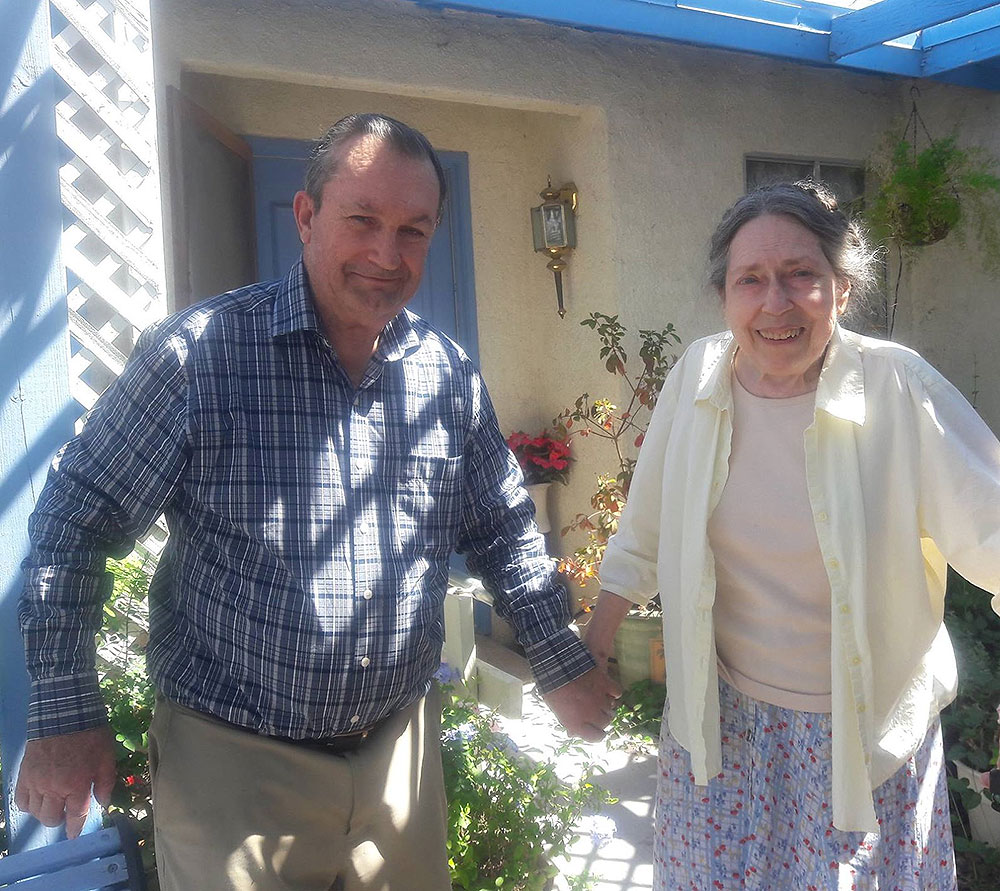
6. How long did it take to start earning income from your online business? Is it a full-time or a part-time income?
It took a long time, for reasons probably obvious from what I’ve written. As I mentioned, I was not under pressure to earn immediately. I naturally work slowly and want to get things right… I had considered the turtle my mascot long before I encountered the SBI! philosophy of just keeping on, slowly and steadily. That really resonated with me.
 When I finally did put ads on my site, they didn’t earn very much. (It was long after the golden days of high AdSense earnings). My husband and I didn’t like the way EnglishHints looked with ads, and I took them off after several months.
When I finally did put ads on my site, they didn’t earn very much. (It was long after the golden days of high AdSense earnings). My husband and I didn’t like the way EnglishHints looked with ads, and I took them off after several months.
I only added them again a few months ago, as it’s become clear it will be a while before other income sources make enough to help with retirement.
In 2014, after some SBI! coaching, I started making pdf packets of lesson plans and worksheets for ESL teachers. My coach pointed out that many EnglishHints’ topics were as much for teachers as students. Many of my newsletter readers are teachers.
In fact, I think some are both teachers and English learners: ESL teachers who are still working on their own English. I hope the newsletters and EnglishHints’ content can help with that!
At any rate, I sell pdf lesson packets on EnglishHints and also on teacher sites like Teachers Pay Teachers (TPT). Last year I earned enough on TPT to more than cover my SBI! fees and other expenses except for some course costs.
I sold very few on EnglishHints until the site became https secure. I didn’t realize that was a problem, because the transaction itself was on a secure site, but it seems I didn’t explain that well. They’ve started selling better on my site recently.
I also have one recent page reviewing an excellent course by another ESL teacher. If it starts getting any response, I may add reviews of a couple of her other courses (that don’t compete with mine).
I also have considered becoming an Amazon affiliate, but I’ve only seen a few books I feel are important to recommend. There’s so much good free content, which is what I mainly link to and try to provide myself.
The income currently barely qualifies as part-time. I’m hoping to turn that around this year, but it has been a very long learning curve. Someone with a business mindset could probably have cut several years off the process, but I hope to start earning a decent (though still part-time) income soon.
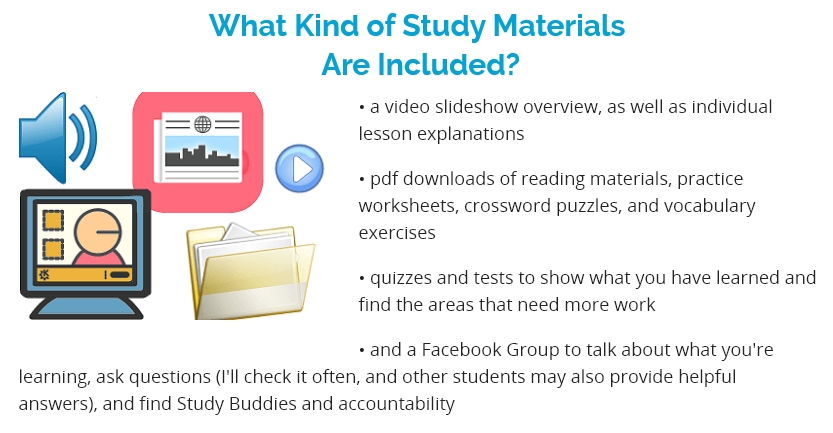
Of course this depends on a variety of factors, for example which niche you choose, how much time you consistently devote to your business, and how intent you are on making money.
While Catherine’s monetization path may have been slow, she settled on a nice mix of income streams: Google AdSense, promoting relevant products in exchange for a commission (i.e., affiliate marketing) and — most importantly — creating and selling her own products.
It’s interesting to hear that sales on Catherine’s site started to increase after she switched to a secure version (from HTTP to HTTPS). Just last month (July 2018), Google announced that the Google Chrome browser will start showing a red warning triangle, together with the words “Not secure” for any site that is not HTTPS.

As a visitor, you’d probably think twice before buying a product or service from a site that Google tells you is not secure, right?
That’s why we made it a priority to help SBI! members easily switch their sites to HTTPS. If you join SBI! now (or joined after October 2017), HTTPS is automatically enabled when you register your domain name.
7. What has been your biggest challenge so far as a solopreneur?
Monetization, definitely. When I started with SBI!, I did follow the Action Guide — at least I did all the exercises, and the Brainstorm It! numbers were good for my site concept.
However, I wasn’t too clear about how I’d monetize, maybe with an ebook, or tutoring, as well as ads. At the time many people were still earning good money with AdSense, and I didn’t realize my plans were too vague. I thought I’d have a much better idea as the site grew.
Now I realize that many of the topics I emphasized don’t have much potential for earnings — at least with my skill set. If I had had a clear sense of how I would monetize, I would have reduced or skipped some of the sections I built and emphasized keywords directly related to potential courses.
I’ve been working on and studying monetization for a long time, including following forum challenges and getting some coaching, but figuring out how to apply it is all uphill for me.
DAY 4 of the Solo Build It! Action Guide is dedicated to investigating and planning the most suitable monetization options for your niche. You’ll use a handy “monetization planner worksheet” to work your way through a variety of monetization possibilities.
Don’t rush this step. It’s tempting, we know. You might think to yourself: “Ah, I’ll figure that out as I go along.” But if you only have a vague idea about how to monetize your traffic, you might take your content in the wrong direction. Or you might settle on just one monetization method, which is a terrible idea.
Sure, you can correct those errors later, as Catherine is doing. But it will take you much longer to see the financial results you were hoping for.
But there are times when you can’t fix it. For example, you may have a niche that simply does not monetize. It’s pretty hard to change that.
So DAY 4 (monetization) is super-important. You should finish the step-by-step process and worksheet knowing…
- that your niche is monetizable to the goals that you want from your online business, and
- which models you will use, thinking each one through and challenging yourself to make sure they are realistic. For example, it does you no good to say that you’ll work with groups of 10 people to teach them English if you are so uncomfortable with the concept (being a lifelong introvert, say) that you know that you’d never really do that.
8. What do you enjoy most about being an online business owner? How has it changed you, your life, your family?
I enjoy most of it. I love the research, from word meanings and origins to articles on various subjects to recommend for my newsletter, “English Detective.” I love the chances for creativity, including writing (usually), making Pinterest pins, and preparing vocabulary or grammar practice for pages, the newsletter, pdfs, or courses.
I really enjoy interaction with my site visitors and newsletter readers, and with other site owners. Some comments about how a page has helped a reader have really “made my day”!
I don’t enjoy copywriting or trying to sell, but I’m trying to learn that too.
Having an online business has been a great help as I’ve gotten less able to do ordinary physical and household activities. My husband has encouraged me to keep on with it even without earnings, for the mental stimulation — though I hope this year to start contributing to our retirement income.
I’ve generally put in more than full-time hours, but we love that I can put it on hold to go visiting our family or camping, or for anything else that comes up that I can help with.
Our daughter just married a wonderful young man last fall, and we enjoy visiting them and seeing the beautiful areas near where they live.
You can work from home, or while on the road. You set your own schedule. You make all the decisions, from research to content creation to marketing.
You can work as many or as few hours as you want to (knowing of course that the fewer hours you work, the slower the business will grow). You can even put your business on hold for weeks or months, if you need to.
You get to “meet” people with an interest in your passion from all over the world. You’ll be acknowledged for the valuable information you shared with them.
Last but not least, let’s not forget about that continuous stimulation for your little grey cells. There’s always something new and exciting (sometimes also frustrating!) to learn in the online business world.
9. And finally… What’s your top tip for someone who is just starting a solopreneur career?
There are such great opportunities online now, if you have a subject you’re passionate about, a willingness to work hard, and good advice and support.
I highly recommend SBI!. I wouldn’t have even tried — and certainly could not have continued — without their tools, guidance, and support!
Just don’t expect it to be easy. Be flexible; be willing to try new things when you fail, change course as necessary, and keep going. There’s a lot to go on to!
Start it as a side hustle. Grow it at your own pace, in your time after work, or when the kids are at school. You may surprise yourself how much you can achieve. Is it easy? Nope, but totally doable. All you need is BAM…
- Brain — you have experience/knowledge in a field that others would want (like teaching English or growing cacti)
- Attitude — you have a positive can-do attitude, and
- Motivation — you persist, you keep on going until you win.
Solo Build It! supplies the rest! 😊
Ready to get started? SBI! can help you with your business idea.
OR
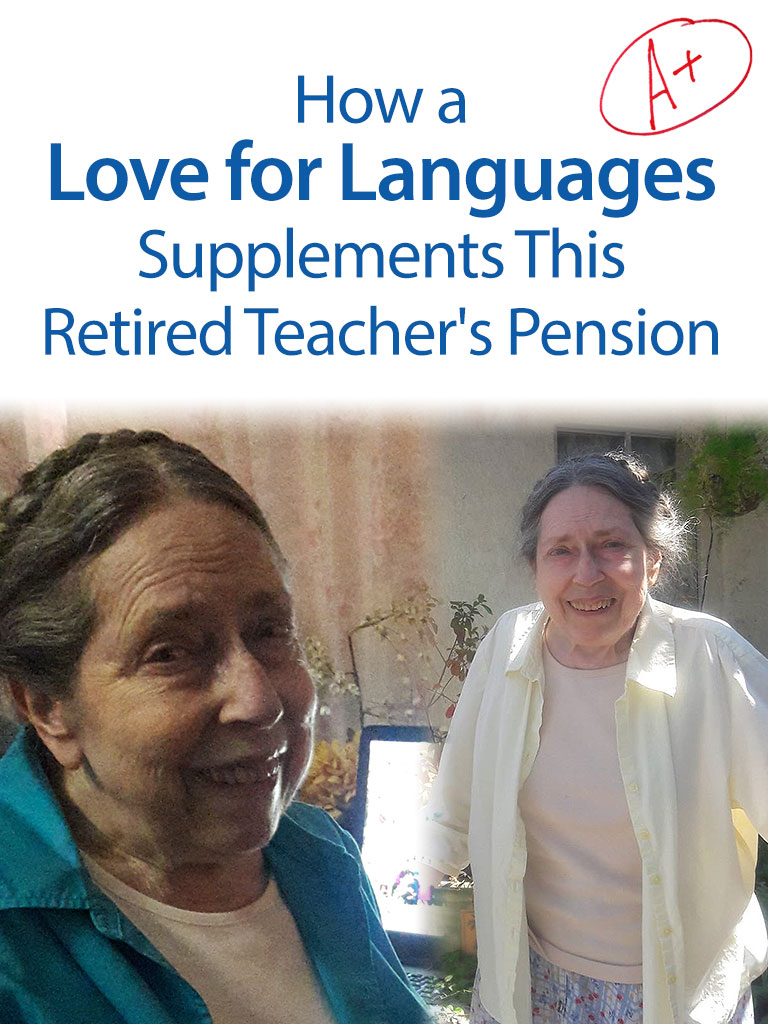
Latest posts by Margit Streifeneder (see all)
- From Traffic Peaks to Auto-Pilot: A Psychologist’s Website Success Story - March 27, 2025
- From Swim Teacher to Solopreneur: Building Passive Income Online - February 27, 2025
- From Concierge to Global Tours: 10 Lessons for Travel Business Growth - December 19, 2024



